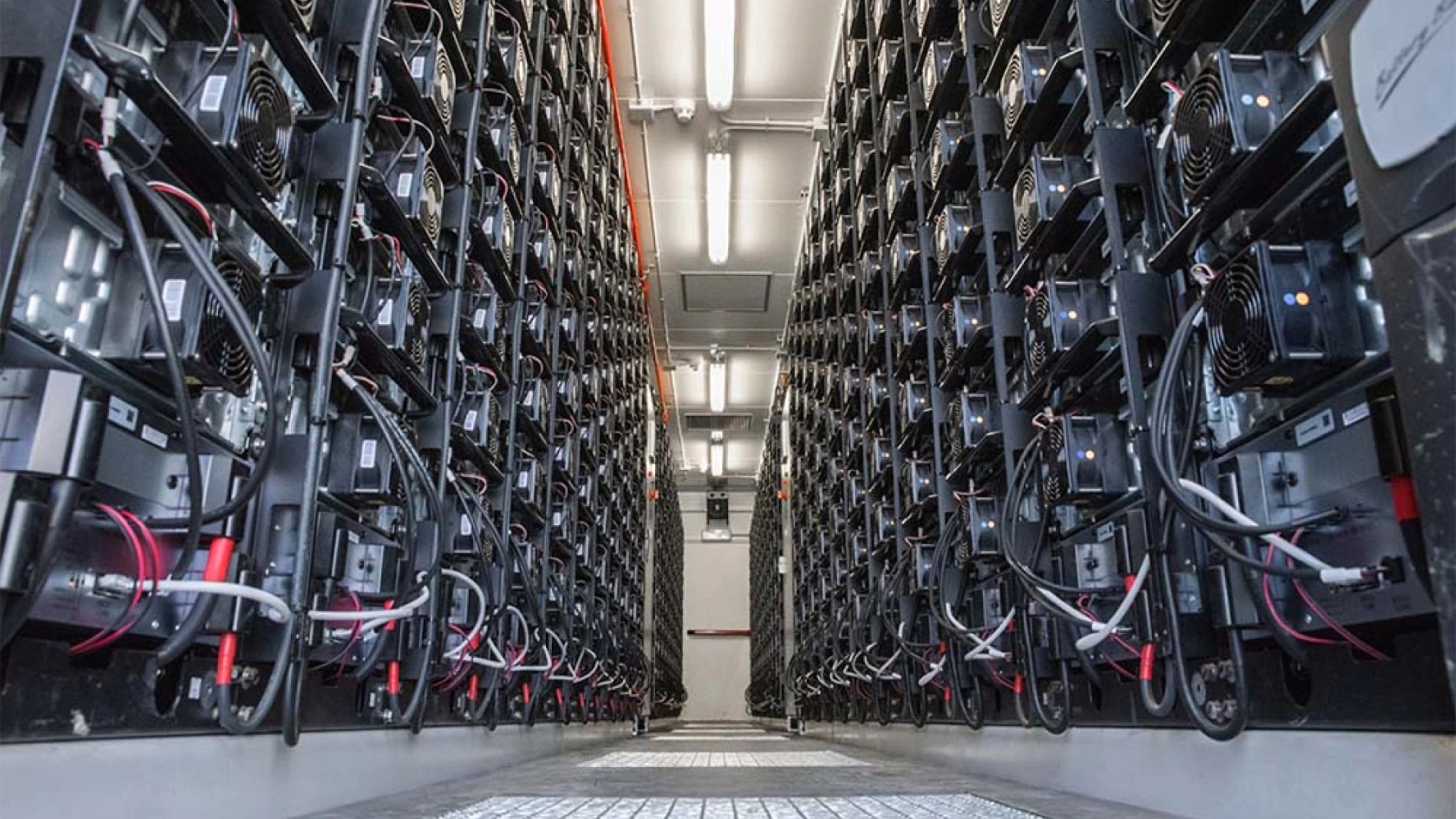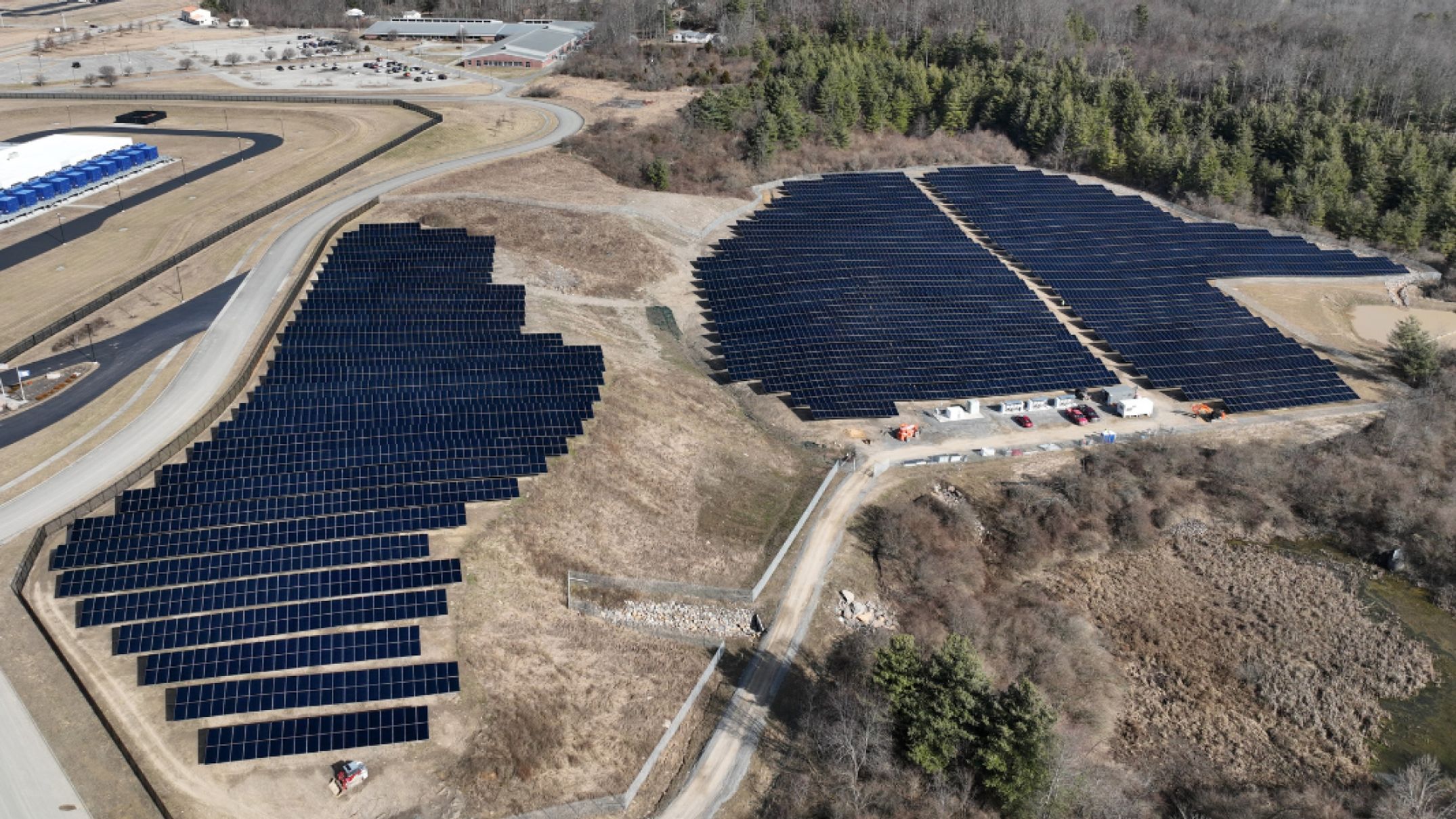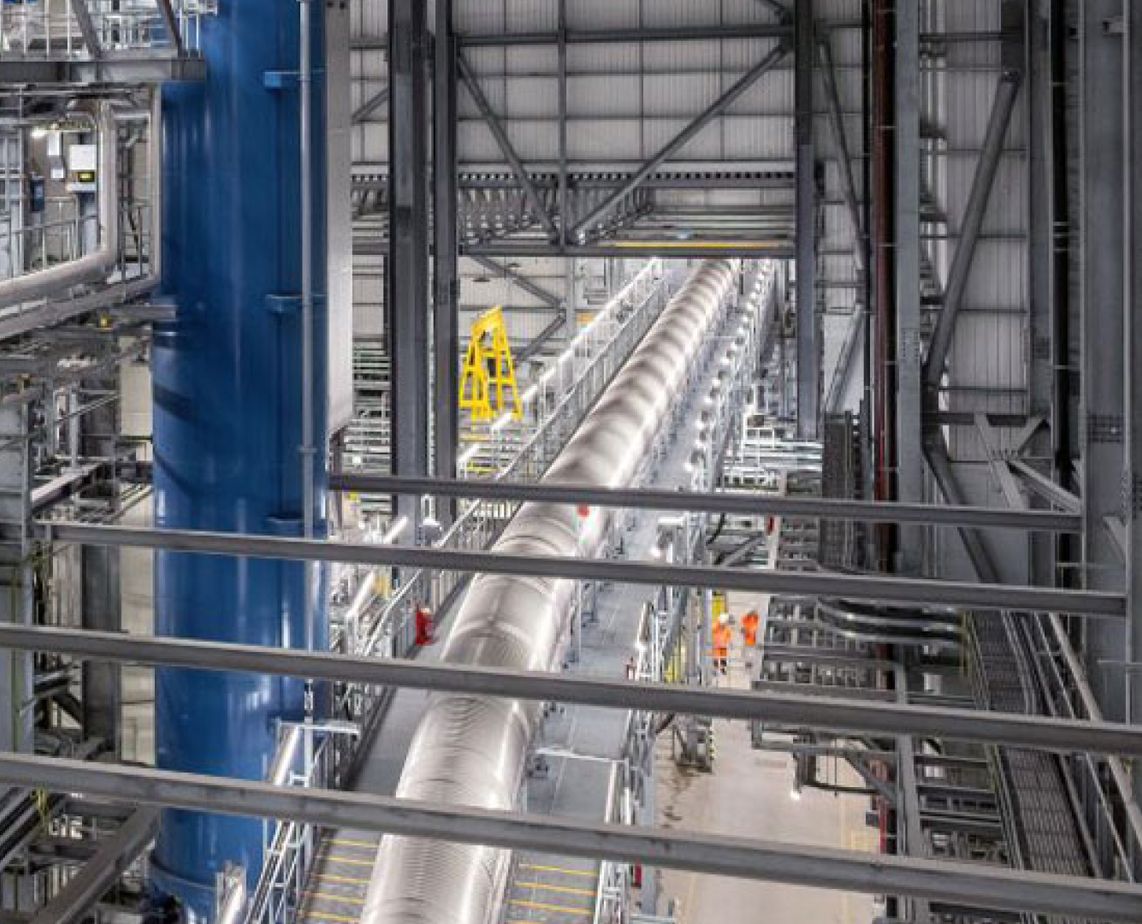

In this exclusive report created in partnership with EQT Infrastructure, ThinQ considers the changes required to deliver on decarbonization.
- Download the full report
1. Waking up to net zero
Net zero is among the largest infrastructure investing opportunities of our time.
Renewable energy has come so far down the cost curve that the question is no longer whether decarbonization will be possible, but how it can practically be delivered. McKinsey estimates it is a $275tn investment opportunity between 2021 and 2050, and private capital will play an important role in delivering this.
On paper, net zero is a simple concept referring to the balancing of greenhouse gasses emitted with those removed from the atmosphere. When used as a North Star, though, it takes on a new power. It reimagines our world as one where industries operate with efficiency, reducing wasted resources and running on renewable, and, perhaps most importantly, cheap energy supplies. There are companies today developing the infrastructure, strategies and business models to turn this idea into reality, but to identify where the best opportunities lie, it is important to understand how we got here.
1.1 Before net zero
Net zero is so central to climate strategies today that it might be surprising to learn the concept was novel just 20 years ago. In 1994, when EQT was founded, no company could have known its Scope 1, 2, or 3 emissions, because the Greenhouse Gas Protocol was yet to be finalized, and it wasn’t until 2015 that the Paris Agreement mandated net zero as a global goal.
“There was a period between 2008 and 2014 where most people working in the energy industry didn’t understand what was going to happen next. The few players who got it became successful because of their foresight before the Paris Agreement,” says Francesco Starace, partner at EQT.
1.2. Early investors took bold bets on sustainability
Back then, few private capital strategies talked about decarbonization, but some investors were already paying attention to the topic in the 2000s and early 2010s.
They put money into technologies like solar, wind, biofuels and fuel cells, which were proven technologies that needed to iron out their business models and become more efficient. Like with carbon capture and hydrogen fuels today, the merits of pouring investment dollars into these solutions were debated. Yet, as they matured and more sophisticated investment and management strategies allowed them to flourish, their use has grown exponentially, making their eventual replacement of oil and gas increasingly inevitable.


2. Investing in net zero today
Renewable energy production is now a cornerstone of infrastructure investing strategies. In 2020, the International Energy Agency announced that the world’s best solar schemes were now offering the cheapest electricity in history.
This has created a ripple effect throughout the economy. Now cheap renewable energy is a reality, businesses are keen to take advantage. Now the transition is no longer simply about energy production, but transforming our entire industrial landscape.
“What’s happening is, effectively, a complete systemic shift which includes modernizing and building of new physical infrastructure,” says Masoud Homayoun, partner and head of Value-Add Infrastructure at EQT. “We now need to not just generate, but store, distribute and consume energy — the very foundation of our society — in a different way. It’s easy to get excited because it’s a complete overhaul that will happen over the next coming decades and it’s being made possible because of significant cost reductions in renewable energy and other types of technology.”
2.1 The shift to renewables is underway
Investments into renewable energy are now being made at a rapid pace, with the IEA expecting global investment in clean energy technologies to come in at $2tn in 2024, compared to the $1tn coal, gas and oil is expected to attract.
This follows 2023’s record year for renewables growth, with IEA data showing that the world added 50 percent more renewable capacity to energy systems in 2023 than in 2022.

2.2 Investments focused on the wider energy transition are gaining momentum globally
Opportunities beyond renewable energy production are earlier on the adoption curve but expected to follow a similar trajectory. For example, in emerging markets alone, The Paris Agreement is thought to have unlocked a $23tn investing opportunity while, according to Net Zero Tracker, 66 percent of the annual revenue of the world’s largest 2,000 companies — $27tn — is now covered by a net zero target.
2.3 But, energy mix is still weighted towards non-renewable sources
Record levels of capital and effort going towards the production of renewable energy have created a new challenge: how can it be accessed?
Backlogged power grids make it difficult to get that energy to end users, with new energy projects currently waiting five years to be connected to the grid in the U.S. The queue of projects waiting to be plugged in is now twice the size of the grid itself.
Solving this problem would result in a new era of energy efficiency. This chart — which, when read from the right hand side first — shows that 67 percent of the energy the US consumes doesn’t actually get put to use. Much of this wastefulness results from fossil fuels. Research from the Colorado think tank RMI, published in June 2024, found that of the 606 exajoule of primary energy put into the global energy system in 2019, 379 was lost during the production, delivery, transportation and use of fossil fuels. According to the RMI’s research, renewable energy sources like wind and solar require effectively no extraction or processing energy, and are therefore far more efficient.
“You can become more efficient by reducing your exposure to fossil fuels, because that’s where the wasteful energy comes from,” says Starace.

“You can become more efficient by reducing your exposure to fossil fuels, because that’s where the wasteful energy comes from. Making net zero a reality requires a mindset shift to the demand side of the energy industry.”
3. Making net zero a reality
“Making net zero a reality requires a mindset shift to the demand side of the energy industry,” says Starace. Using the electrification of transport as an example, this means the question is no longer “can we make cars that run on electricity?”, but instead, “what does a school bus operator need so it can run its entire fleet on electricity?”
Technologies like distributed energy, battery storage and vehicle charging infrastructure will help get more renewable energy to commercial consumers, unlocking decarbonization for those industries in the process. Non-energy themes that increase circularity and resource efficiency — such as recycling, waste-to-energy solutions, or even nascent technologies like carbon capture — will also be an important component of achieving net zero.
Taking a long-term perspective, EQT has continued to invest in and acquire companies that are participating in the net zero megatrend. The firm’s network of more than 600 Industrial Advisors, who include entrepreneurs, former politicians and industry leaders, also helps to identify and execute on opportunities most capable of delivering the efficiencies that decarbonization can enable.
3.1 The decarbonization decades
If the 2000s and 2010s were about scaling up renewable energy supplies, then the 2020s and beyond will be the decarbonization decades.
Sales of renewable technologies such as batteries are expected to continue to trend up and to the right, the curve becoming steeper as more cost efficiencies are realized. This will enable important transitions to take place beyond our energy systems, from the electrification of transport to new recycling solutions that reduce waste and the amount of natural resources being extracted, cutting emissions in the process.
“We’re at a point in time where we have hugely increasing power demands, driven by multiple factors like AI, and the electrification of transportation and industrial processes. It’s unique since, historically, power consumption has otherwise been stagnant or declining due to efficiency increases,” says Asis Echaniz, partner, EQT. “Our focus area is everything that’s affected by this: how do you address these increasing power demands?”


3.2 The scale of the opportunity
The net-zero financing gap is widening, with the Climate Policy Initiative estimating that $2tn of climate financing will be needed per year between now and 2030 to fund the gap, increasing to $7.3tn per year up to 2050.
Investments into renewables remain important, as their supply is crucial to decarbonization efforts, but investors, GPs and corporates must also support infrastructure that will remove bottlenecks to actually accessing that energy. Electric cars, for example, can’t realize their potential if there is no charging network to serve them. Renewable energy won’t reach the masses unless we support distributed power systems that connect communities and commercial premises.

3.3 EQT’s approach to investing in the transition to net zero
EQT invests in Infrastructure and Private Capital climate opportunities from early-stage ventures through scale up to large buyouts. EQT aims to support good companies to address environmental challenges by growing them, improving their operations and offering relevant solutions through their products and services. It has validated Science Based Targets for 44 of its portfolio companies, corresponding to 57 percent of total invested equity.
On net zero, EQT makes thematic infrastructure investments into areas such as:
- Generating, storing, and distributing energy
- Decarbonization and electrification of industrial processes and transport
- Resource efficiency and circularity
The firm’s active ownership approach, where decisions are made by incorporating deep sector and industrial expertise, supports its aim to future-proof companies and also deliver potentially higher returns to investors, who are supporting the transition to a more efficient, competitive and decarbonized economy. McKinsey research found that companies that pursue a strategy of decarbonization with cost competitiveness in mind have achieved a 40 percent reduction in emissions and a 15 percent increase in financial performance.
“There are still people who think this is a trade off, that if you want to become carbon neutral it means you have higher costs,” says Starace. “But the way we see it is that it actually lowers costs, lowers risk and improves company performance.”
EQT also identifies opportunities for portfolio companies to cross-pollinate efforts — for instance, renewable energy provider Zelestra is working with water company Saur to deliver 100GWh of clean energy annually, and its real estate business, EQT Exeter, is working with distributed energy developer Madison Energy Infrastructure to install community solar projects on warehouse rooftops.
3.4 The next ready-to-scale tech in the transition
Looking towards the future, numerous technologies are ready to accelerate with the backing of private capital. These are technologies that are proven to work, and will do so at scale, but which need support when it comes to larger-scale deployment and achieving cost efficiencies.
These technologies include:
- Electric fleet charging networks
- Batteries and battery recycling
- Distributed energy and storage
- Waste-to-energy and biofuels
- Electric heat pumps
Investing in these technologies now could produce particularly powerful results. Take battery storage: capacity forecasts have continuously been revised upwards (see chart) as more investors have begun to pay attention to this important technology. A steep curve is now anticipated that reminds us of the uptake seen with other renewable energy technologies.

These developments are already underway, and the addition of supportive policy measures can greatly accelerate investment (although the timing and duration of such policies are often uncertain). For example, one year after the Inflation Reduction Act was passed, more than 100 new clean energy manufacturing facilities were announced, amounting to almost $80bn in new investments from private companies.
These changes will take time, but those who understand the direction of travel earliest will have the most opportunity to accrue value. “It’s a transformation that will happen,” says Homayoun. “We’re looking for three things: technology that is proven and works in practice, has the potential for meaningful growth, and where investment can be distributed over time. That last one is important, as it allows for course correction and operational value creation along the way because you are not taking on single project or technology risks.”
Spotlight on: Battery storage
Battery storage technology is a reliable solution for managing the intermittency of renewable energy supply (the well-known example of this being solar panels, which do not generate power unless the sun is shining). Energy can then be fed back to the grid or end users as needed.
Battery storage projects range from large-scale grid storage operations to on-site microgrids providing localized supplies. A combination will be essential to ensure schools, hospitals and homes are never without power in a renewable energy future.
The IEA says that between now and 2030, around 120 GW of grid-scale battery storage will need to be added per year to meet net zero goals, up from the 11.1GW added in 2022.
Case study: Statera
In November 2023, EQT acquired Statera, a UK-based battery storage and flexible generation infrastructure developer. It has 1GW of flexible generation in operation and under construction — enough to power 750,000 homes — and a total project pipeline of over 16GW. As well as batteries, it provides a number of other flexible energy technologies which can support the UK’s transition to a renewable energy supply, such as pumped hydro-electric storage, and green hydrogen energy production.
Learn more about Statera

Spotlight on: Decarbonising transport
Transport emissions continue to grow, making decarbonization an urgent challenge. But it’s not as simple as putting electric vehicles on the road — they require new power distribution systems, reliable access to charging infrastructure and circular technologies that make the volume of battery production required sustainable.
According to the IEA, transport emissions grew at an average annual rate of 1.7 percent between 1990 and 2022, which is faster than any other end-use sector and on par with industry. Given how much energy goes to waste in the transport sector (see chart in Chapter 2.3), a shift to renewable sources will have a significant impact on overall emissions.
Case study: First Student
U.S. school bus operator First Student was acquired by EQT in 2021. It is in the process of electrifying its fleet and aims to have 30,000 electric buses on the road by 2035. So far it has been awarded ~$400m in grants and rebates from the Environmental Protection Agency’s Clean School Bus Program, enabling it to deploy 1,200 buses across the U.S.
First Student has a number of partnerships that will help accelerate the roll-out of electrified transport across the U.S., such as with electric charging infrastructure provider Bechtel and the utility company Entergy, which it is working with to pilot vehicle-to-grid charging. There is also potential to turn buses into roving battery storage units, which can provide backup power to their local communities.
Learn more about First Student

Spotlight on: Distributed energy
Rooftop solar and heat pumps are examples of distributed energy resources that we see in the world today, but they also include microgrids and small modular reactors.
These technologies deliver renewable energy as close as possible to the end user, reducing the amount of energy wasted through transmission while also providing reliable supplies of electricity. They can also protect energy supplies in the event of adverse weather. The IEA estimates 179GW of distributed solar was added across the world between 2017 and 2020.
Case study: Madison Energy Infrastructure
Madison Energy Infrastructure is a developer, owner, and operator of distributed solar and energy storage projects for commercial and industrial and community-based customers within the U.S. The Company's on-site, proximate, and offsite distributed energy projects provide security of electricity supply and deliver significant cost savings vs. retail electricity prices for its customers, while accelerating the broader energy transition by helping offtakers shift away from fossil-based grid power and execute their desired ESG and resiliency goals. Since launching in 2019, Madison has built a portfolio of more than 740 MW across the U.S.
Learn more about Madison Energy Infrastructure

Spotlight on: Circularity 2.0
The recycling system we know today is part of the early movement towards a circular economy. But, designed for a pre-net zero world, it now needs to adapt to the needs of tomorrow. As production of things like solar panels and batteries increases, there will be new challenges around what to do with that hardware at the end of life. Meanwhile, the Covid pandemic, the Russia-Ukraine war and other geopolitical tensions have encouraged a rethink of what a resilient supply chain looks like, with domestic resource preservation likely to be emphasized going forward.
“Circularity is much broader than just reducing waste and recycling,” says Anna Sundell, EQT partner. “If you are redesigning your production with circularity in mind, you’re thinking now about what happens to products at the end of their useful life in 20+ years time and how these can be repurposed back into society.”
Case study: Encyclis
Encyclis is a waste-to-energy company that treats waste that otherwise would be destined for landfill. The company uses this waste to create energy and recover materials that can be turned into aggregate for the construction industry.
In collaboration with the UK government, it is currently progressing plans to build a carbon capture site that would be among the first such facilities in the country. Once complete, the Protos Energy Recovery Facility is expected to process up to 400,000 tonnes of non-recyclable waste and generate up to 49MW of electricity — enough to power 90,000 homes. The addition of carbon capture and storage would make net zero energy-to-waste production a reality.
Learn more about Encyclis

Disclaimer: Investments in infrastructure, like all investments, carry risks. Past performance does not guarantee future results. Investors should conduct their own research or consult with a financial advisor before making investment decisions.
ThinQ is the must-bookmark publication for the thinking investor.
On the topic ofThe Transition to Tomorrow




